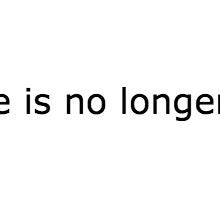
Zac Efron “looks like something a gay guy designed in a laboratory.” That’s how Seth Rogen puts it in Neighbors, when he looks out his window to see a tank top–clad Efron moving his fraternity into the house next door.
It’s true, right? The perfect body, the beautiful face, the Paul Newman-esque blue eyes. But for most of his career, Efron has been something that a teenaged girl designed in a laboratory: that same beautiful face and body, but with an equally beautiful heart. Efron — and the characters he played, whether Troy Bolton (High School Musical), Charlie St. Cloud (Charlie St. Cloud), or Logan Thibault (The Lucky One) — were sensitive pieces of man meat who really just wanted to respect, cherish, and maybe, just maybe (and totally only when you’re ready!), have a single kiss and/or very lovingly take your clothes off.
Efron wasn’t the first to blend the beautiful face and generous heart — that’s provenance of the matinee idol, whose lineage goes all the way back to Wallace Reid and Rudolph Valentino. But Efron’s career struggles are the result of the impossible contradictions of total masculinity and total sensitivity we ask of our aging teen idols. There’s a reason that so many of them “bro out,” sometimes fatally.
There’s an impossible ideal set out for female stars — it’s constantly discussed, whether in memory of Marilyn or in reference to Britney. Male stars supposedly have it easier: They get to play sexy for longer; they get good, meaty roles well into their sixties, and since teenage boy tastes run Hollywood, they get roles that rotate around them and their interests.
In reality, though, Hollywood’s only actually good to male stars who can play a very certain type of hetero hero. That hero is also straight, virile, and designed, above all, to be someone whom 1) men want to be and 2) women want to have sex with. Robert Downey Jr., Matt Damon, Brad Pitt — the only way you can get around that imperative is to be funny, in which case you can be someone, like Will Ferrell, whom men want to be friends with and women find adorable.
The former teen idol, however, can’t really be either of those things. Even as he grows up and maybe grows a beard, his image is forever bound by his status as a fetish object for teen girls. And it’s not just that he’s “cute” — he’s a very particular type of cute. Truly and exquisitely beautiful. So beautiful, in fact, that most could’ve grown their hair and passed as teen girls. They’re enormously attractive to pubescent girls not because they’re sexual, but because they’re not.
When a girl is first confronting her attraction to the other sex, it’s terrifying. The thought of the sexual act itself, all that physical action and mess, is terrifying. What you do want to think about is romance — a guy who thinks you’re special, who wants to do nice things for you, who wants to hold your hand. Teenage boys who already look like men are threatening, but teenage boys who look not that dissimilar from your best girl friends — only they want to be your boyfriend… that’s comforting. Thus: Robert Pattinson, Justin Bieber, Jonathan Taylor Thomas, Davy Jones, ad infinitum.

But first there was James Dean. Because in order to have a teen idol, you had to have teens — and before the 1940s, there wasn’t such a thing. Before the Depression, there were two ways of being a person in the world — first, you were a child, and then, when you were old enough to bear children and work on your own, you were an adult. But the lack of work during the Depression made it so that thousands of teenagers who would’ve otherwise transitioned into adulthood were able to go to high school, not get married right away, and, gradually, establish themselves as a separate demographic, a distinction further ratified when the United States entered World War II. You were a teen or you were a soldier.

And advertisers knew a promising new market when they saw it. The first teen magazine, Seventeen, published its first issue in 1944, and over the decade to come, the teenager became king. So much of what we associate with ‘50s pop culture — the poodle skirts, Elvis, sock hops, The Twist — was all teen culture. From that point forward, the culture industries (film, television, music, fashion) would begin marketing primarily not to the median, but to the demographic with the capital, and the lack of other financial demands, to purchase it freely. Teenagers!
Dean was the perfect star for the budding teenage market: young and pretty, reckless and wounded, and he was super sensitive — he cried! All of which made it all the easier to really fall for him when, at all of 24 years old, he died in a fiery car crash. The fervor around Dean’s death was unprecedented: Sure, women supposedly had attempted suicide in the streets after Valentino’s death in 1926, but he was established as the biggest male star in the country for years. By contrast, Dean had been in a single film (East of Eden) at the time of his death, with just two more (Rebel Without a Cause, Giant) to be released in the months to come, which only helped sustain the general frenzy among girls between the ages of 12 and 19 for years to come.

It makes sense, then, that entertainment executives all over Hollywood began working themselves into a frenzy creating new teen idols. It also made sense that these new idols were a bit less James Dean (volatile and unpredictable) and more along the lines of Ricky Nelson, the clean-cut star of the smash hit Ozzie and Harriet. Ozzie and Harriet offered a cookie-cutter, totally palatable, somewhat boring portrait of the ‘50s ideal, complete with a totally cute, totally vanilla younger son.
In some pictures of Nelson, he looks like the popular guy from your high school who was probably named Chad or Brad. There’s a certain future Business Leader of America quality to him, something more Biff from Back to the Future than Marty McFly. But take a look at him singing his No. 2 hit, “A Teenager’s Romance,” on a 1957 episode of Ozzie and Harriet.
Nelson’s a horrible performer — the way he awkwardly shuffle-dances right around the one-minute mark — but his inability to look the camera in the “eye” is pure bashful teenager. He had the Dean-esque bouffant and the rolled-up shirt sleeves, but he was performing for his mother, who promised to provide “the down beat.” Crucially, this wasn’t some actress playing his mother — it was his real mom, and that was his real dad and real older brother who step into the frame to watch him, authenticating his goodness and sincerity.
Pabulum, sure, but coupled with Nelson’s fresh good looks — and the fact that you could watch him on ABC every week — it transformed a semi-talented kid into one of the biggest stars of the decade. Suddenly, he was usurping the traditional stars on the cover of the fan magazines — the first television star to do so — a move that signaled the rise of a new generation of media consumers. Elvis may have been sexier and more exotic — those hips! — but you could get your parents to buy you a Ricky Nelson record. Wholesome, white, straight, safe, plus he looked great as a cowboy in Rio Bravo, a film that cemented his popularity.



Nelson also set the business model for teen idols to come: He acted, he sang, he appeared in movies. He could be cross-promoted across all spheres, exploiting teen girls’ desire to own as much of their object of affection as was made available to them. His appearances on Ozzie and Harriet turned into de facto music videos, and between 1957 and 1962, Nelson had an astonishing 30 Top 40 hits. Dozens of teen idols — most notably, Donny Osmond and Davy Jones — followed this strategy, and it served as the slightly altered foundation for Disney’s reboot of its own teen franchise, The Mickey Mouse Club, in 1989.
We all know the talent that came out of The All-New Mickey Mouse Club over its six-year run: Justin Timberlake, Britney Spears, Christina Aguilera, JC Chasez, Keri Russell, and Ryan Gosling. Young potential molded to sing, dance, improvise, and be charismatic on cue.
The All-New Mickey Mouse Club also coincided with Disney’s reboot years, when, along the renaissance of Disney animation, the company was remembering how to successfully exploit its new product across media in a way that Walt had pioneered with Mickey, Disneyland, and thousands of other Disney products. Disney owned everything these kids did with MMC in the early 1990s, but they weren’t playing the long game: When the show ended in 1995 and at least four of the Mousketeers went on to tremendously lucrative singing careers, Disney’s name wasn’t on any of it. (Which is part of the reason these stars could go on to major careers: no one cared when Gosling’s first major film role, for example, was as an anti-Semitic neo-Nazi.)
It took another decade — and the massive success of Hilary Duff — for Disney to fine-tune what would become its own “studio system” of young stars. By 2006, it had the infrastructure in place; starting with Miley Cyrus, Disney would never let an opportunity to cross-promote pass it by again. The new “class” of Disney talent was almost entirely “raw” (new to entertainment, unshaped) and ready to be molded into franchise lynchpins. Hannah Montana was a massive hit, but so were Wizards of Waverly Place and The Suite Life of Zack & Cody; together with a slew of Disney Channel original films, they helped The Disney Channel overtake Nickelodeon in ratings for the first time in years.
For Disney, this was much more than a ratings game. It was what a growing swath of cross-media properties could mean for the conglomerate at large. Put differently, it wasn’t just that Hannah Montana was a hit; it was that the soundtrack to her show, her concert series, her Disney Channel movies, and the ever-unfurling spirals of merchandise were generating incredible profits — upwards of $1 billion by 2007. But Miley was only half of Disney’s success strategy. The other half became a veritable phenomenon: High School Musical.


High School Musical is a perfect reverse-engineering tween product. If tweens want little more than to experience high school, then Disney offers that experience — only frames it as one in which all matter of stereotypes (jocks, cheerleaders, artists, nerds) can eventually leave behind their self-consciousness and social roles to collaborate in the name of music.
Unlike other kids' products — SpongeBob SquarePants, say, or Pixar — there’s no second meaning available for adult audiences. HSM plays it completely straight — in both meanings of the word — and is wholly bereft of irony. The purity of emotion, coupled with its marketing toward tweens and young teens, helped turn it into a phenomenon: Sure, parents thought it was cheesy, but who cared, so long as every kid from 8 to 13 was buying the soundtrack and participating in the Disney-branded productions at their own schools.
HSM was filled with would-be stars: the all-American Ashley Tisdale, the affable Corbin Bleu, around whom Disney would later try to build another franchise. But the true prizes were the star-crossed lovers in the lead roles: Zac Efron and Vanessa Hudgens. Efron was a bright-eyed, floppy-haired jock; Hudgens was the ethnically ambiguous mathlete. Societal expectations tried to keep them apart, but musical theater brought them together! Their relationship was completely chaste, the musical numbers were ridiculous, but with those blue, smizing eyes, Efron was a teenage dream: all heart, no libido.
Like Ricky Nelson, Efron couldn’t really act in HSM — but he didn’t really need to. He was what, back in classic Hollywood, they’d call a “trouper” — someone who could passably sing, dance, and perform on demand. And like all Disney Channel product, what matters isn’t the talent, but the ability to look and act like something that tweens would like to become and/or spend their allowance on reproducing on their backpack.
Off screen, Efron’s actions fit the on-screen image. Trained, undoubtedly, by the Disney publicity team, he became an expert at reproducing the banal tidbit: “I was always the shortest kid in school,” he told People. “Plus, I had a huge gap in my teeth. I got teased more about my gap than anything else.” He couldn’t live without his skateboard and kept a poster of Tyra Banks above his bed. “I’m good at Hacky Sack,” he explained, and, “I consider myself a pretty good kid. There are always little slipups, but I try to work hard at my job.”
Whether or not Efron was, in fact, a “good kid” matters less than Disney’s ability to make sure that their images remained as such. It’s one thing when you’re a twentysomething appealing to an adult audience — if you show up drunk on TMZ, it’s not the end of your career. But these stars’ livelihood was rooted in a very specific, very wholesome appeal to supposedly impressionable tween kids: What they did off screen absolutely mattered.
From January 2006 to October 2008, that was the guiding logic of Efron’s off-screen career. But he — or someone at Disney — knew that the most effective way to amplify his star (and HSM) was a tried-and-true one: Make the on-screen romance come to (real) life.

Rumors of Efron and Hudgens’ flirtation thus began to circulate in summer 2007. Paparazzi caught them holding hands on the beach, but Efron was tantalizingly cagey in press for Hairspray, his first non-Disney film. High School Musical 2 debuted on Aug. 17, 2007 — coinciding with a Rolling Stone profile titled “The New American Heartthrob,” with a perfectly bronzed Efron removing his shirt on the cover.
When asked whether a ring on his finger is a “commitment ring,” Efron “turns red” — “I’m not going to say who it’s from,” he says, “This is just a ring from a friend that I got. ‘Commitment’ is way too weird a word for me right now. I’m wearing it for a friend … It is a female friend, but I can’t say who, because then it would be chat-room pandemonium and teen magazine hysteria. Yeah.”
Which is precisely what happened when, just days later, People magazine debuted a cover featuring “Their Real-Life Romance!” promising the details of how “America’s hottest teens fell for each other.” And so “Zanessa” was born: the couple that got to kiss (although very carefully out of sight) even when their on-screen counterparts couldn’t, and had to deal — very, very, carefully — with the revelation of Hudgens’ nude photos, which were quickly framed as a) a “mistake” or b) taken solely for Efron, which, as her one and only, diffused the sexual explicitness. The relationship would last for five years, but the acceptance of the photos were one of many events that trumpeted Efron’s willingness to toe the Disney publicity line while ignoring the overarching Disney publicity line.
He’d bailed on the High School Musical tour in order to film Hairspray, in part because, as he readily admitted, it wasn’t his voice on the soundtrack. And even though Efron was a passable singer, he resisted the dozens of offers for a music contract — “I didn’t want to do what everyone else did,” Efron told Entertainment Weekly. “I thought to myself, What can I contribute to the music industry? I can’t say that I would be proud of the work that I put down.” He was cagey about whether or not there’d be a High School Musical 3, and after accepting a role in the remake of Footloose — which would clearly replicate his High School Musical image — he backed out.
Efron ended up doing HSM 3, which, like the first two, was a smash hit — and even gave Efron a chance for an out-of-focus kiss with Hudgens, performed in the classic Hollywood style that I like to refer to as “fish kissing,” aka no tongues allowed. But before he could even finish publicity, the conversation had already turned to the difficulty of transitioning out of teen idolhood. Amid the revelation of his relationship with Hudgens, he’d ironically been “phased out” of the tween demo: As Leesa Coble, editor of Tiger Beat and Bop, explained, “When people are on the cover of Rolling Stone and in People, that’s sort of a sign for us that the peak has happened for our readers… You don’t want to like what your parents like.”
An article for EW declared “navigating the perilous journey from teen phenom to grown-up actor is a full-time job”; USA Today did an entire piece on failed teen idols in order to talk about Efron’s potential future. But Efron (or his agent-publicist) had a game plan. He was set to star in 17 Again, which seemed like a perfect transitional film; he was to play a teenage version of Matthew Perry, who, through some murky movie magic, wins a chance to redo his senior year in high school. Efron opened the film in a basketball uniform — a clear visual throwback to his tenure at HSM — and danced to “Bust a Move,” but the moonfaced sincerity was (almost) gone, replaced by genuine comedic timing. The way we feel about Lindsay Lohan in Freaky Friday, that’s how we should feel about Efron in 17 Again: It’s like a revelation of actual talent. Just look at the way he defends his Ed Hardy T-shirt.


The other prong of Efron’s strategy was to earn a bit of indie cred in Richard Linklater’s Me and Orson Welles, starring Claire Danes, with Efron in an eager high school drama role. Again: close enough for coherency with his existing image, but far enough away from Disney to add cultural cache. But the conceit of the film was all just a bit too precious. It flopped, but Efron was buoyed by the success of 17 Again, which had grossed $136 million on a $40 million budget.
The year was 2009. Efron was 22 years old. It was time to play adult — but how? He’d successfully broken free from Disney, but the next chapter, at least for the male teenage idol, has always been almost impossible to navigate. When you’re no longer a teen, how do you stay a star?
Ricky Nelson grew out of his teens, but he couldn’t shake the image. He changed his name to Rick, but nobody would call him that, and attempts to exploit his marriage (his wife, Kris, made appearances on Ozzie and Harriet) were contradictory: Here he was, in the same teen setting, trying to be an adult.
The British Invasion pushed Nelson aside, and he spent the next 30 years of his life with intermittent hits and, later in life, a scandalous divorce, covered in detail by the tabloids. He was the first victim of the double bind from which all teen idols must escape: Your fame is based on your teen status, but no one can stay a teen forever. You must escape, but if you do, you’re also escaping the very thing that made people love you.

In articles about teen idols, authors always hold up the handful of stars that managed to negotiate this transition. Johnny Depp escaped 21 Jump Street; Leonardo DiCaprio ditched Titanic; Heath Ledger banished 10 Things I Hate About You. But those stars are the exception, most certainly not the rule.
And it took all of them a while — DiCaprio wallowed through The Beach; Ledger survived Casanova — but they endured and, on the strength of their performances, won the roles and the accolades that changed the conversation about them from one of beauty to one of skill. They became active “actors” instead of passive pinups, masculine performers instead of feminized objects of desire.
But if you can’t shake that feminized beauty, you can ride it into something more mature — which is precisely what Efron decided to pursue. He wasn’t following the script of former teen idols, however, so much as the matinee idol, sometimes known as the “romantic lead.” The most prominent of the last 50 years, and the closest to Efron’s position, was at the height of his popularity right around the same time as Ricky Nelson. He had slightly better acting skills, a much broader chest, scant singing skills, but a combination of beautiful and kind that appealed to what we’d today call grown-ass women. That man was Rock Hudson.

Rock Hudson had a farmer’s body and a pretty boy’s face, with that slight hint of vapidity that makes it easy to believe he’d be loyal to you always. Like Channing Tatum, only with bigger dimples and more flannel. During his teen years, back when he was still named Roy Scherer, he’d been an anonymous high school kid who, upon graduation, was stationed in the Philippines with the U.S. Navy during World War II. When the war was over, he moved to Hollywood in hopes of making it big, working as a truck driver to pay the bills. Desperate, he sent his picture to an agent named Henry Willson who, seeing his dimples, agreed to take him on as a client.
In the years after World War II, Hollywood was dramatically reconfiguring the way it found and made stars. Before, each studio cultivated its own stable of would-be stars, scouting girls, boys, men, and women on the street, on vaudeville, on the stage. They’d sign potential new talent to a contract and, depending on their age and level of sophistication, put them through the wringer: new hair, new face, new accents, new name. Elocution lessons, riding lessons, dancing lessons, and “testing” in various bit roles to see what type of star you’d be. But the anti-monopoly Paramount Decrees, issued in 1947, not only forced the studios to sell off their exhibition arms (their massive chains of theater), but also engage in massive cost-cutting, including the gradual dismantling of their star-making systems.
Who, then, would make the stars? People like Henry Willson, who became his own mini-star-making apparatus. Willson, however, had a speciality: strapping young men who could convincingly play the part of the all-American man. It didn’t matter if they could act — all they needed, and all men like Hudson really had, were the looks. The rest could be taught later.
Willson, whose homosexuality was an open secret in Hollywood, specialized playing in men who, unlike him, had the potential to play straight and hot: Where Willson was paunchy, middle-aged, and balding, his discoveries had the sort of natural musculature that comes from working with your body. Corn-fed, homegrown, square jaws: men. No matter that most of these men also enjoyed having sex with other men — the performance of heterosexuality can be readily taught.
Which is precisely what happened with Hudson. Willson gave him a name, sent him to lessons to rid him of a slight effeminate lisp, and gave him some good-man hobbies to list as “interests.” In the beginning, he couldn’t act — for his first bit role, he had but a single line, and needed 38 takes to complete it — but Willson knew that he could build demand in other ways, like planting pictures of Hudson, with that soft, endearing smile, all over the fan magazines. After all, you couldn’t know what a bad actor he was when you were too busy staring at his face.
Hudson, in other words, wasn’t marketed to men. Willson understood that Hudson would never be a John Wayne or a Frank Sinatra — he wasn’t gruff or rugged enough, nor was he truly sophisticated. But there was something about his face that seemed to emanate warmth, and something about his size that promised safety. If Marilyn Monroe was the male fantasy of the ideal ‘50s woman, with an image that combined the contradictory messages of pure sex and total innocence, then Rock Hudson was her counterpart: a female fantasy, purely masculine yet totally sensitive.
That image was borne out in film after film — starting with Magnificent Obsession, in which he plays an asshole turned warm and generous by the love of a good woman (think A Walk to Remember, only less Jesus). Over the course of the ‘50s and early ‘60s, he played a laundry list of sympathetic he-men (every Douglas Sirk film ever made, but especially All That Heaven Allows) and winsome sweet talkers, most often opposite Doris Day, in films like Pillow Talk.

Hudson’s characters were rarely sexual, just flirty — and in hindsight, it’s easy to see just how performative his version of hetero-masculinity really was. That ideal of the totally masculine yet totally sensitive man was the product of a gay man and his gay manager — two men with the objectivity, the very lack of stake in the game, to understand just how to cater to what women wanted, which was all love, all promise of passion, with little actual sex itself.
Hudson was the master at this type of role for more than a decade, but he had successors: Robert Redford in The Way We Were, Ryan O’Neal in Love Story, Richard Gere in everything, Patrick Swayze in everything else. John Corbett in My Big Fat Greek Wedding and Sex in the City; Joseph Gordon-Levitt in (500) Days of Summer. And, of course, today’s leading romantic man, despite appearing in only three romances in his nearly two-decade-long career: Ryan Gosling.
Each of these stars are fundamentally understood in terms of their beauty and sincerity. Even if they have a hard body, it shields a soft and generous heart within — which, depending on the narrative, will either a) heal a broken woman or b) slowly emerge through the love of a good woman. The Notebook’s Noah Calhoun, for example, is Southern, charismatic, and works with his body. He’s passionate but not overemotional; caring, but not a sissy. He shows his love by acts — dangling from a Ferris wheel, rebuilding a crumbling plantation house. But that love is singular: His heart ignites only for the right woman.

It’s relationship porn — the grown-up version of teen idol movies — and it’s almost identical to the scenarios of Rock Hudson’s stardom. It’s also exactly what Efron chose to pursue after the disappointment of Me and Orson Welles.
The first attempt, Charlie St. Cloud, was preposterously bad. And not “so bad it’s good,” but “playing-baseball-with-dead-little-brother” bad. Some conceits that work well in best-selling books, especially those involving ghosts, simply do not translate well on screen — and usually have the unfortunate effect of making everyone who has to interact with the ghost look ridiculous.
It should’ve been better: It had the same director as 17 Again; there’s lots of sailing and thus ample time for Efron to look hot and/or valiant. But the love scene is in a graveyard, and the romantic love interest, played by Amanda Crew, looks like Entourage’s Emmanuelle Chriqui plus Pretty Little Liars’ Troian Bellisario, but without any of the sparkle. It’s all the pathos and redemption of a Nicholas Sparks narrative, but with none of the charisma that always makes those movies better than they deserve to be.
St. Cloud grossed $46 million on a $40 million budget, which, in Hollywood economics, is a disappointment, if not a near flop. But Efron was already lined up to play an actual Sparks hero in The Lucky One. As U.S. Marine Logan Thibault, Efron survives Iraq with the help of a photo of a woman he finds on the ground in the aftermath of a night raid. He comes home from Iraq, suffers from some demonstrative post-traumatic stress disorder, and decides to walk from Colorado to Louisiana, the site of the photo that “saved his life.”
The woman in the photo (Taylor Schilling, pre-Orange Is the New Black) lives, naturally, in the South, on a body of water, and runs an animal care facility along with her grandmother and adorable young son. The photo had been given to her brother, also a Marine, who had been killed the year before…but Logan can’t quite admit what brought him, on foot, along with his loving German shepherd, to hang out with and look longingly/respectfully at this slightly older single mom.


The Lucky One has all of the Sparks hallmarks, including lots of water, golden slanting light, and a ramshackle old house that a character makes his/her own. Efron is more reserved — like he’d learned the lessons of too much cry face in Charlie St. Cloud — and, at times, you could mistake his veteran’s stoicism for emotional flatness. But there are moments of greatness: dancing with Schilling and, most importantly, having a super-heady love scene in the dog shower. Trust me on this one.
There’s a matinee idol moment when he takes off Schilling’s bra with one hand — Tumblr’s all over it. That’s a suave move that people write about in books, but it’s not viscerally sexual.

Same for the everybody-sigh scene when he tells her that, “You should be kissed every hour, every minute, every day.” No girl actually wants that; they want the sentiment behind it. But there’s also a stolen, incredibly erotic moment when he bites Schilling’s lip.
This isn’t the moment before the kiss memorialized on all the Sparks covers, perfectly dubbed “White People Almost Kissing.” That moment before the kiss — that’s romance. The kiss itself, especially a kiss like this — that’s sex. The Lucky One made almost $100 million on its $25 million budget thanks to the Sparks romance, but it was that sex that made him a fit for Lee Daniels’ The Paperboy — Efron’s chance to not only ditch the teen idol image, but the matinee idol as well.
The Paperboy is a totally bizarre, totally engrossing film, doubly distorted through the telling of an unreliable narrator who may or may not be in love with Efron. It’s ostensibly about Nicole Kidman’s love for an imprisoned murderer, and Matthew McConaughey's investigative journalism around that murderer’s trial, but it’s really all about Efron: sweaty, awkward, beautiful, broken Efron.
As in 17 Again, Charlie St. Cloud, The Lucky One, and even Efron’s real life, he’s skipped college (or, in this case, dropped out) and gone straight to adulthood. But instead of making him a man, it’s made him: He spends his days lying around in his tighty-whities, flirting with the maid, and resenting his father. He’s as beautiful as he ever was, but that beauty has nothing to do.
And unlike all of Efron’s previous directors, Daniels understood that a man in his early twenties doesn’t go around looking for romance. There’s lust there, but it gets turned back on itself, frustrated, curdled, confused. As in 17 Again, The Lucky One, and even New Year’s Day, when he helps sad Michelle Pfeiffer fulfill her bucket list, he’s attracted to older, seemingly unavailable, blonde women. But this blonde woman has a self-identified dark side, and Efron’s equal parts desirous of her and disgusted with that desire. It’s a coming-of-age story, but the age that Efron comes into is one of disillusionment.
I stand firm in my belief that this film is underrated. Sloppy, yes; confused, certainly — but with moments of electricity that vibrate through you for days. Part of that is Nicole Kidman’s fearless performance, but part of it is the way that Efron orbits around her. Yet the story of the film wasn’t Efron’s risky, nuanced performance, but the tidbit that Kidman pees on him. A highly symbolic gesture to relieve the pain of dozens of jellyfish stings, but still: She pees on him. It could’ve added the sort of bizarre titillation — the true indie cred — that Efron needed to break free from his past roles. But after a successful festival run, it became an American punching bag: The A.V. Club went so far as to name it the worst film of 2012. It made $2.5 million on a $12 million budget.
Efron was still committed to trading idolhood for legitimacy. He and Hudgens had broken up in 2010, cutting the last of his explicit ties to the HSM image. In addition to Paperboy, he appeared in three indie movies (a supporting role in Liberal Arts; co-lead in At Any Price and Parkland) over the course of a little more than a year. Each of these films could’ve been a breakout — Liberal Arts was filled with indie darlings; At Any Price was to be the first mainstream film from Ramin Bahrani, whose Chop Shop and Goodbye, Solo had been critical, if small, smashes. On paper, Parkland should’ve been an Oscar contender. But all three films barely saw limited release; At Any Price made just over $300,000 at the box office; Parkland took in just over $1.5 million.
In all these films, Efron plays something approximating an adult — one whose main task isn’t being beautiful or learning how to love. He played a stoner. He raced cars; he held a gun. He had an M.D. And nobody wanted to watch him. Of course, there are larger industrial forces that swallow indie movies like these, but it’s also easy to look at the fate of those films, coupled with the vitriol surrounding The Paperboy, and understand what Efron did next. He became a bro.
It happened both on screen and off. While all of the movie bombs were dropping, Efron was already busy filming That Awkward Moment (co-starring fellow up-and-comers Miles Teller and Michael B. Jordan), in which he plays a twentysomething committed to playing the field, and the Judd Apatow–produced, Seth Rogen–starring Neighbors, which figures him as a sort of ageless frat dude, forever committed to theme parties, abs, and keg beer.
While shooting Neighbors in spring 2013, rumors of Efron’s drug use began to surface — but not just alcohol or weed, the bro drug of choice. He disappeared from public view for months until, in mid-September, E! broke the news that he’d been in rehab for alcohol abuse months earlier; now he’s “healthy, happy, and not drinking” and “taking time to focus on working.” Hours later, TMZ reported that Efron’s rehab had been for cocaine and ecstasy, and had been in so deep during the making of Neighbors that he failed to show up for filming. Rumors swirled that he’d mixed oxy with alcohol and had to be revived, that it was two rehab stints, not one.

Efron posted a picture of himself in Machu Picchu, Peru, looking bro-tastic in a bandana: “Hey guys! Just returned from an incredible trip to Peru with my dad and wanted to thank you for all your support these past few weeks….means the world to me. Love you guys! -Z.”
It was classic Disney–style PR — as were the multiple appearances at Lakers games, some with his That Awkward Moment co-stars, others with his six-month sobriety chip very much on display. There was very strategic evidence of a relationship with model-turned-actress Lily Collins — paparazzi caught them leaving a movie and holding hands at none other than Disneyland — and only a savvy few pointed out that Efron and Collins just so happened to share a publicist.
When Efron slipped and broke his jaw in November, only TMZ and the tabloids insisted on talking about the curious fact that there hadn’t been a 911 call. And in a very savvy and very strategic move, Efron, flanked by Teller and Jordan, appeared in a tongue-in-cheek promo insinuating that Efron had broken his jaw after failing to adequately pleasure a female visitor. It was all very in keeping with the message of That Awkward Moment — enough to push the film to a $53 million international gross on an $8 million budget.
That Awkward Moment is a confused film filled with charismatic performances — and the first time that Efron was really allowed to hang out with other guys, live in a “den of testosterone,” go get wasted at a bar, and say the line, lying in bed with a beautiful girl, “I was going to make you wait too…but then I realized, I’m a dude.” It’s still, at bottom, a love story, but it’s also cloaked in bro clothing. The matinee idol is gone, replaced by the well-trod performance of American twentysomething masculinity.
Which, if the trailers are to be believed, is exactly what we’re to expect from Neighbors. Efron gets to experience the college life he skipped to become a full-fledged romancing adult, and he’s living it as loudly as he can. The trailer is hilarious the way all Apatow-produced trailers are hilarious — and the very existence of a “red band” version (which Awkward Moment had as well) signals that the movie is for adults who like sex and dick jokes.
It’s difficult to be surprised, then, by the reports of Efron’s rehab stints, or by his (purported) relapse last month, when he, along with a “bodyguard” with a long arrest record, were involved in an early morning fight on Skid Row. The details are jumbled; the stories aren’t straight. What’s clear, however, is that Efron’s appearance at a Lakers game, just days later, with Neighbors co-star Halston Sage, was a planned distraction, as was his shirtless appearance at the MTV Movie Awards, flexing and saluting just long enough to morph from endearing to embarrassing.



Neighbors will be a hit. And Efron seems more than ready to embrace the new image: He sold his high modernist home and bought Sean Kingston’s “raging party palace.” In Neighbors promos masked as an ESPN commercial, he’s the guy in a muscle shirt who knows who Aaron Rodgers is, not Seth Rogen. On a visit to Workaholics, he admits to “plowing a lot of chicks,” so many that “it’s hard to count.” In another promo, Efron confesses that Rogen had instructed him that his sole purpose was to “stand here and keep his pretty mouth shut.” It’s all very tongue-in-cheek. Or maybe it’s not.
In truth, the success of That Awkward Moment and Neighbors, after so many lukewarm successes and failures, suggests something important not only about the state of the film industry, but our demands of the male millennial as he makes his way into adulthood. Many millennials grew up on Disney, which taught them that Zac Efron, and his particular teen idol unification of beauty, bravery to follow his passion, and overarching emotionality was the way to succeed in life.
But when those kids made it to actual high school and college, there were contradictory understandings of what it meant to be “a real man” for other men (misogyny, homophobia, intolerance, sexually exploitative, in various shades of sublimation) and a “real man” for women (sensitive, emotional, vulnerable). In both understandings, the new American man is supposed to be jacked, but that jackedness is for contradictory purposes: For men, it’s a sign of discipline and power, for women, it’s the way to make yourself into a pinup, a passive fetish object. But the ultimate confusing message remains: Be a dick, but be a sweetheart.
Millennial women face similar problems, usually in vivid variation of the virgin–whore dichotomy: Be sexually adventurous but don’t be a slut, but smart but don’t be a downer. Be a Cool Girl. And just as that construction is ultimately unsustainable, so too is the dick–sweetheart persona. Efron tried being the good guy, and men’s magazines asked if he was wearing “guyliner.” He tried being the weird, independent guy, disarticulated from his beautiful face, and no one saw the movies. So it’s natural that he’d adopt the role of the bro: one of the few contemporary archetypes that demands dude respect and attracts female attention.

But when does the bro ever get to grow up? Efron skipped from high school directly to adulthood — both on and off the screen — so it’s understandable that he’d go back and spend some time flexing his abs, doing keg stands, making out with a girl without wearing a promise ring. As Efron told BuzzFeed’s Adam B. Vary on the set of Neighbors last year:
I had to grow up pretty quick. When I hit 18, I took my, I guess what you'd call a professional career, pretty seriously. I really cared about it and worked really hard toward it. So I didn't really have much of a chance to do the fraternity thing, to do that. So this is my way of taking my anger about that out, you know what I mean? Fighting to party and to keep that last bit of youth before I have to grow up.
In Neighbors, “fighting to party” looks ridiculously fun — all costumes, barbecues, and an endless stream of girls and beer. No hangovers; no consequences. In Efron’s real life, “fighting to party” looks like a broken jaw and a Skid Row brawl. But when you’ve spent your formative years in the system, it’s hard to separate those realities, especially when subject to the constant surveillance of paparazzi, which effectively turn an entire life into a performance.
As Rogen explained on set, he’d never seen a star attract the sheer volume of paparazzi as Efron. And Efron was frank about their effect on his life — he couldn’t go outside, it drove him “crazy.” “I don’t want to be a complainer about it,” he said, “but it kind of fucked up a couple of years in my life.”
Paparazzi is a way of celebrity life, but most stars don’t experience that life until well into their twenties. Efron and the rest of the Disney crew were taught, from age 18, to “perform” their off-screen lives for the camera in a way that matched their on-screen images. Other celebrities (especially reality ones) do this as well, but no one is pushed to match the two performances as closely as the teen Disney star. They’re trained to talk about nothing in the interviews at the very point in their lives when they want to have opinions about everything, to be chaste when their bodies desire the opposite.
It’s only natural, then, that when this imperative follows you through your teens and early twenties, you reach your 25th birthday and find yourself fabricating stories about sushi runs and breaking down on Skid Row after midnight. And I don’t know if the fault is on any single entity so much as the simple psychology of teen idolhood: Whether the idol emerges from MGM in the 1940s or Disney in the 2010s, it’s not the control over the teen’s life so much as the impossible demand to live the life of a scrubbed, softened, totally vanilla version of yourself that makes its way to the consumer.
There’s one way this could go, and it’s a path dotted with fan shrines to teen idols gone too soon. River Phoenix, Brad Renfro, Cory Monteith. For some, drugs and death are the only way to escape that teen idol doppelgänger. But beneath Efron’s puppy-dog eyes and flexing abs, I think there’s something else there, something potent and significant, something more than the sum of his previous roles and GIFable kisses. Something more, in other words, than a teen idol who joins a frat and spends the rest of his life reminiscing about it.
Back in 2008, Richard Linklater had just finished directing Efron in Me and Orson Welles. “I would never take Zac at face value,” he said. “He’s actually a bit of a poker player. He comes in all nice and he just takes your money. I think you underestimate Zac at your own peril.” I see Efron dancing with Kidman in the rain in The Paperboy, or so skillfully lampooning his image on Saturday Night Live, and I don’t see the shell of a teen idol, but the makings of a future star. Not a bro or a matinee idol, not a Ricky Nelson or a Rock Hudson, but a star who takes risks and brings the audience along with him. A star, in other words, who doesn’t fulfill our notions of masculinity but expands them, who follows the trajectory of Ryan Gosling and Channing Tatum over Chris Pine and Ryan Reynolds.
The question, then, is whether we’re ready to start thinking of Zac Efron as someone not confined by his past, but capable, like the rest of us, of fleeing our “high school” selves — of becoming something bigger, compelling, and complicated.
